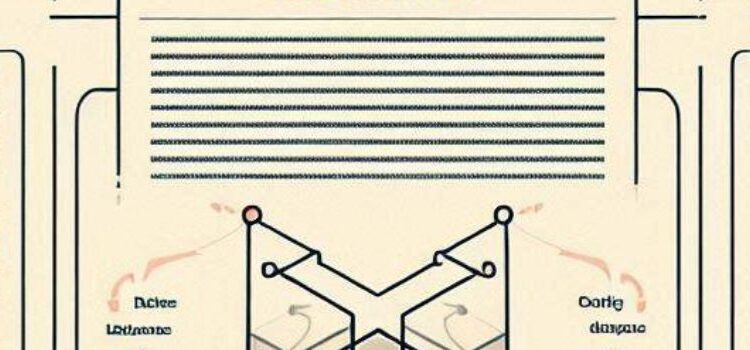How to Write a Clear and Concise Abstract in Academic Writing
One of the most important elements of any academic text is the abstract. This component is not only an introductory element but, in many cases, the first and only point of contact a reader has with a scholarly article. In an era of high scientific output and information overload, the abstract becomes an essential tool for scientific communication, condensing the core ideas of a more extensive work into a brief, accessible format.
Understanding how to write a clear and concise abstract not only supports the effective dissemination of knowledge but also enhances the overall quality of academic writing. A well-crafted abstract should stand on its own: it must present an accurate overview of the research’s content, methodology, key results, and conclusions.
What Makes a Good Abstract?
A strong academic abstract serves at least three purposes: it informs, persuades, and defines boundaries. It informs the reader about the study’s subject, persuades them of its relevance and contribution, and sets clear boundaries regarding the scope of the work—avoiding misleading expectations. This is no small task, especially considering that it must be achieved in a short text of approximately 150 to 250 words (though this range can vary depending on the journal or call for papers).
An abstract is not a condensed introduction, nor a simple list of topics covered. It should also not be a collection of generic phrases or scientific clichés. Every sentence must serve a specific purpose and avoid repeating information already evident from the title or general context.
Internal Structure of the Abstract
While structure can vary by discipline or journal, scientific abstracts generally follow a logical flow, often aligned with the IMRaD format (Introduction, Methods, Results, and Discussion). However, unlike the body of the article, these components should be integrated fluidly within the abstract, without formal headings or divisions.
- Introduction or background: Clearly and succinctly state the research problem or general topic. This section should answer questions such as: What is being studied? Why is it important?
- Study objectives: Clearly articulate what the research aimed to investigate, avoiding vague or overly broad language.
- Methodology: Briefly mention the research design, sample type, and primary methods used.
- Main results: In a few sentences, include the most relevant findings—whether quantitative or qualitative. Avoid excessive detail but provide specific outcomes.
- Conclusions or implications: This part answers the “So what?”—highlighting the study’s contribution or its practical and theoretical implications.
Clarity and Conciseness: The Keys to an Effective Abstract
Clarity means the reader should understand what is being communicated without ambiguity. This is achieved through direct writing, avoiding unnecessary technical language or specialized jargon. Conciseness, on the other hand, involves removing redundant or secondary information while preserving the core message.
The goal is not simply to shorten the text, but to synthesize it intelligently. Often, writing a good abstract requires several revisions. It should not be a hastily written paragraph at the end of a paper but a carefully constructed piece, composed with the same rigor as the rest of the document.
Common Mistakes
Common issues found in abstracts include:
- Failing to mention actual research results, leading to an overly descriptive summary.
- Including claims that lack empirical support.
- Repeating ideas from the title or main body without adding value.
- Using vague expressions such as “interesting results were obtained” without specificity.
- Offering generalizations that do not align with the study’s objectives.
Avoiding these mistakes requires a solid understanding of the abstract as a standalone text. It’s worth remembering that the abstract is often the only part of a paper that readers consult before deciding whether to read the full article.
Final Recommendations
Before finalizing your abstract, consider the following steps:
- Read it aloud to check for clarity and flow.
- Ask a colleague unfamiliar with the project to read it and summarize what they understood.
- Ensure that no data or ideas are included that do not appear in the main paper.
- Adjust it to the word count limits without omitting essential information.
Writing a strong abstract is an exercise in synthesis, conceptual clarity, and technical precision. Consistent practice and critical reading of others’ abstracts can be powerful strategies for improving this skill.
References
- Hartley, J. (2008). Academic writing and publishing: A practical handbook. Routledge.
- Swales, J. M., & Feak, C. B. (2009). Abstracts and the Writing of Abstracts. University of Michigan Press.
- Day, R. A., & Gastel, B. (2011). How to write and publish a scientific paper (7th ed.). Greenwood.
- Belcher, W. L. (2019). Writing your journal article in twelve weeks: A guide to academic publishing success. University of Chicago Press.
Cómo escribir un resumen (abstract) claro y conciso en textos académicos
Uno de los elementos más importantes de cualquier texto académico es el resumen o abstract. Este componente no solo cumple una función introductoria, sino que es, en muchos casos, el primer y único punto de contacto que un lector tendrá con un artículo. En contextos de alta productividad científica y saturación de información, el resumen se convierte en una herramienta de comunicación científica esencial, ya que condensa en un espacio breve las ideas centrales de un trabajo más extenso.
Comprender cómo escribir un resumen claro y conciso no solo contribuye a una mejor difusión del conocimiento, sino que también fortalece la calidad general de la escritura científica. Un resumen bien elaborado debe poder sostenerse por sí mismo: ofrecer una visión precisa del contenido, la metodología, los resultados y las conclusiones de la investigación.
¿Qué caracteriza a un buen resumen?
Un buen resumen académico cumple al menos con tres funciones: informa, persuade y delimita. Informa al lector sobre qué trata el trabajo, persuade sobre su relevancia y contribución, y delimita el alcance del estudio, evitando generar expectativas equivocadas. Esto no es una tarea menor si consideramos que debe lograrse en un texto de entre 150 y 250 palabras (aunque esta extensión puede variar según la revista o convocatoria).
El resumen no es una mera introducción abreviada ni una lista de temas tratados. Tampoco debe ser una acumulación de frases genéricas o clichés científicos. Cada oración debe cumplir una función precisa y no repetir información contenida en el título o que se deduzca fácilmente por el contexto.
Estructura interna del resumen
Aunque la estructura puede variar según la disciplina o la revista, los resúmenes científicos suelen organizarse de forma lógica, siguiendo el esquema IMRyD (Introducción, Métodos, Resultados y Discusión). Sin embargo, a diferencia del cuerpo del artículo, en el resumen estos componentes deben integrarse de manera fluida, sin subtítulos ni divisiones formales.
- Introducción o contexto: Se debe establecer de forma concisa el problema de investigación o el tema general. Esta sección debe responder a preguntas como: ¿Qué se estudia? ¿Por qué es relevante?
- Objetivos del estudio: Conviene explicitar claramente qué se pretendía investigar, evitando frases vagas o amplias.
- Metodología: Se debe mencionar, de manera sintética, el diseño de investigación, el tipo de muestra y los métodos principales.
- Resultados principales: En pocas frases, se deben incluir los hallazgos más relevantes, cuantitativos o cualitativos. Aquí conviene evitar datos excesivos, pero sí aportar resultados específicos.
- Conclusiones o implicancias: Esta parte responde al “¿para qué sirve esto?”, señalando la contribución del estudio o sus implicancias prácticas o teóricas.
Claridad y concisión: claves del resumen eficaz
La claridad implica que el lector comprenda, sin ambigüedades, lo que se comunica. Esto se logra con una redacción directa, sin tecnicismos innecesarios ni jergas especializadas. En contraste, la concisión exige eliminar información redundante o secundaria, sin sacrificar lo esencial.
No se trata de abreviar a toda costa, sino de sintetizar inteligentemente. Muchas veces, escribir un buen resumen implica reescribirlo varias veces. No debe ser un párrafo apresurado, escrito al final, sino una pieza redactada con el mismo rigor que el resto del texto.
Errores comunes
Es habitual encontrar resúmenes que:
- No mencionan los resultados obtenidos, quedando en un plano meramente descriptivo.
- Incluyen afirmaciones sin evidencia empírica.
- Repiten ideas del título o el cuerpo sin valor agregado.
- Abusan de frases vacías como “se obtuvieron resultados interesantes” sin especificar cuáles.
- Presentan generalizaciones sin conexión con los objetivos del estudio.
Evitar estos errores requiere atención a la lógica del resumen como texto autónomo. Recordemos que muchas veces es lo único que un lector consulta antes de decidir si leer el artículo completo o no.
Recomendaciones finales
Antes de dar por terminado el resumen, es recomendable:
- Leerlo en voz alta para verificar su fluidez.
- Pedir a un colega que no esté familiarizado con el trabajo que lo lea y diga qué entendió.
- Verificar que no se mencionen datos o ideas que no aparecen en el artículo.
- Ajustarlo al número de palabras permitido, sin caer en la elisión de información clave.
Escribir un buen resumen es un ejercicio de síntesis, claridad conceptual y precisión técnica. La práctica constante y la lectura crítica de resúmenes ajenos pueden ser grandes aliadas para mejorar esta habilidad.



